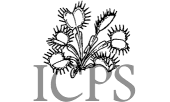|
Carnivorous Plant Newsletter
Volume 34, Number 2, June 2005, pages 36 - 41; Front Cover
Nepenthes rowanae (Nepenthaceae), a remarkable species
from Cape York, Australia
CHARLES CLARKE • Queensland • Australia
ROD KRUGER • Queensland • Australia
Keywords: conservation -- taxonomy: Australia , Nepenthes mirabilis, Nepenthes rowanae.
Introduction
The tropical pitcher plant genus Nepenthes consists of approximately 85 species, the majority of which occur in Southeast Asia (Jebb & Cheek, 1997). Although Bailey (1897) and von Meuller (1866) described 11 species from the Cape York region of Queensland, Danser (1928) reduced all of these to synonyms of the widespread species, N. mirabilis (Lour.) Druce. The only taxon described by Bailey which Danser (1928) considered to possess characteristics that were atypical of N. mirabilis was N. rowanae Bail., of which Danser wrote, “Only N. rowanae shows a character not yet met with in N. mirabilis, viz. campanulate-infundibuliform upper pitchers. A similar aberration, however, is often met with in several allied species and is certainly insufficient for specific distinction”.
In recent revisions of the genus (Stanley, 1982; Jebb & Cheek, 1997; Cheek & Jebb, 2001), Danser’s interpretations have been upheld, despite the fact that the type specimens of Bailey’s taxa held at the Brisbane Herbarium (BRI) were not examined (and in fact have not been studied in detail since the time of Danser’s revision). Moreover, detailed field observations of Australian Nepenthes have perhaps never been conducted--much of the key material at BRI was collected by Frank Jardine in the 1890’s and specimens collected after that time are nearly all from well-explored, easily accessible localities where N. mirabilis is abundant, but aberrant taxa are not.
In 2001, Rod Kruger made several expeditions to Cape York with the intention of relocating N. rowanae in the wild. He was successful and noticed that this taxon had several characteristics that made it easy to distinguish from N. mirabilis, thereby raising the possibility that N. rowanae may be a distinct species. In 2003 we embarked on a formal expedition to Cape York to study this taxon in detail. Our observations showed that N. rowanae possesses several stable, significant morphological and ecological characteristics that are not exhibited by N. mirabilis. Accordingly, we re-instate N. rowanae as a distinct species here. The following text provides the first detailed description of N. rowanae and includes ecological notes and information on how to distinguish it from N. mirabilis.
Nepenthes rowanae Bail., Qld. Agric. J. 1 (1897), t. s.n. Holotype: Jardines.n. (BRI, AQ#278790), Australia , Queensland , Somerset ; Macfarl. in Engl., Pflanzenr. IV, 111 (1908) 69; Nepenthes mirabilis auct. non (Lour.) Druce, Danser, Bull. Jard. Bot. Buitenzorg III, 9 (1928) 330; Stanley, Flora of Australia 8 (1982) 8; Clarke, Nepenthes of Borneo (1997) 105; Jebb & Cheek, Blumea 42(1) (1997) 64; Cheek & Jebb, Flora Malesiana 15 (2001) 106; Clarke, Nepenthesof Sumatra and Peninsular Malaysia (2001) 164.
Emended Description
Subscandent shrub. Stems initially erect, then scrambling, occasionally to a height of 2m, ≤ 4m long, ≤ 12mm in diameter, internodes ≤ 3cm, cylindrical. Leaves coriaceous, petiolate; blade lanceolate, ≤ 40cm long, ≤ 10cm wide, gradually contracted towards the petiole, very gradually tapering at the apex, apex rounded and slightly peltate. Midrib arced throughout in a crescent-like manner from the base to the apex of the blade. Petiole ≤ 10cm long, attachment to the stem simple, clasping the stem for half of its circumference, the margins decurrent along the stem for 1/2-2/3 of the internode. Tendrils straight, ≤ 60cm long. Longitudinal veins 5-6 on each side of the midrib, pennate veins distinct, running almost straight to the margin from the midrib. Leaf blade has 3-4 longitudinal furrows running throughout its length. Lower pitchers arising abruptly from the end of the tendril, base very broad (to flat in some specimens), pitcher cup broadly ovoid, ≤ 20cm high, ≤ 15cm wide, with a distinct hip in the upper half of the pitcher (often in the upper 1/4). Pitcher contracted from the hip to the peristome, mouth horizontal, rising steeply at the rear, neck absent. Inner surface of pitcher glandular beneath the hip, glands ovate and recessed, 0.01mm wide, ≤ 3600 glands/cm2. Two wings, often bearing multi-cellular fringe elements over part of their length, extend from just beneath the peristome towards the base of the pitcher. In many mature plants, the wings only extend half-way down the pitcher and rather than possessing fringe elements throughout, they are flattened and expanded, being T-shaped in cross section. Multi-cellular fringe elements, when present, ≤ 5mm long. Peristome ovate in cross-section, except at the rear of the pitcher, where it becomes flattened and expanded, ≤ 20mm wide, the opposite ends often overlapping beneath the lid. Ribs distinct and raised, ≤ 0.5mm apart, ≤ 1mm high. Teeth distinct but short, ≤ 1mm long in most parts, ≤ 3mm long near the apex. Ribs at the front of the pitcher, between the wings, often distinct and raised, ≤ 2mm apart, ≤ 3mm high. Lid ovate, strongly cordate at the base, often indented at the apex, ≤ 8cm long, ≤ 7cm wide, often with two barely-distinguishable keels. Lower surface densely covered with nectar glands, circular to oval in shape, slightly raised. Glands towards the margins circular, c.0.2mm wide, those near the centre ovate, 0.5 x 0.25mm. Spur simple, usually bent, ≤ 6mm long. Upper pitchers infrequently produced, similar in shape and structure to the lower ones, but more infundibular towards the base, with the hip located immediately below the peristome, wings reduced to ribs and the lid more ovate, ≤ 15cm high, ≤ 8cm wide. Inflorescence a cylindrical raceme, peduncle ≤ 20cm long, rachis ≤ 40cm, angular to cylindrical ≤ 8mm wide. The rachis is occasionally subtended by a filiform bract, ≤ 15mm long. Pedicels ≤ 15mm long, lacking bracteoles. Sepals elliptical, ≤ 7mm long. Female inflorescences generally shorter than the males. Fruits ≤ 25mm long, seeds filiform, usually about 15mm long. Indumentum thin and dense on all young parts of the plant except the upper surfaces of the leaf blades, the hairs being long, mostly simple and white in colour. Most hairs are caducous, but a dense covering is retained on the outer surface of the pitcher rim, just beneath the peristome, and on the pedicels. Pitchers generally deep red throughout, but occasionally forms with green pitchers have been observed in the field.
Distribution: Australia ( Queensland, Cape York Peninsula, Somerset).
Ecology: Open, wet areas among banksias, pandans and sedges, growing in peat and/or sandy substrates, 0-10m asl.
Known natural hybrids:Nepenthes rowanae x mirabilis.
Conservation status:Nepenthes rowanae is known from several swamps in the northern parts of Cape York Peninsula, but is not known to exist elsewhere. Despite this, all populations currently lie in protected areas. According to the IUCN guidelines (Anon. 1994), a category of Low Risk--Conservation Dependent is proposed.
Etymology: Named in honour of Ellis Rowan (1848-1922), an outstanding botanical illustrator of Australasian plants.
Discussion
Herbarium material of Nepenthes rowanae is scant. At BRI there are three specimens that can be unequivocally identified as belonging to this species. The type specimen, Jardines.n. (BRI, AQ#278790), has only one lower pitcher, an illustration of which accompanied Bailey’s (1897) original description. The latter was based on this single lower pitcher only, with an accompanying note suggesting that a full description would be provided after more material was obtained from Somerset by Jardine. A second collection by Jardine (Jardine s.n. (BRI, AQ#46873)) consists of several loose fragments contained in a plastic bag (the manner in which they were preserved by Jardine made it impossible to mount them on card). Bailey attached a note identifying these specimens as N. rowanae, but never published a more detailed description of this species. Another note attached to these specimens, written by G.T. White, states, “There seems some mixture here but I should say these are the specimens referred to by Bailey in Agricultural Journal of Queensland 1. 369. Nov. 1897”. However, we interpret all of the material in this collection as belonging to N. rowanae. Later, Danser attached a label stating the following, “Further materials of N. rowanae Bail., which seems an abnormal form of N. mirabilis only”. The third specimen (Whitehouse s.n. (BRI AQ46888)) appears to have been collected more recently, but no collection date is provided on the label. This specimen consists of a short stem bearing several leaves, a lower pitcher and a female infructescence. Another Whitehouse collection, Whitehouse s.n. (BRI AQ46884 (= N. mirabilis)), is dated 1943 and it is likely that the material of N. rowanae was collected at the same time. Further collections of N. rowanae have been made by us and will be deposited at BRI at the conclusion of our research.
Nepenthes rowanae is an impressive species that produces richly coloured, ovoid to oblong lower pitchers that may occasionally reach 20cm in height. Pitcher shape is somewhat variable--the most extreme forms produce squat pitchers that are as wide as they are tall, but the most common ones have pitchers that are about twice as tall as wide. A key characteristic is that the pitcher hip is always at least half-way up the pitcher cup, and usually higher. The stems rarely attain lengths greater than 3m before dying off and being replaced by off-shoots from the main rootstock, which is large, woody and resistant to low intensity fires (which are common during the dry season). This growth habit is also exhibited by N. rajah Hook.f.. Indeed, mature plants of N. rowanae are superficially similar in appearance to that species. As in N. rajah, aerial pitchers are only produced occasionally. They are similar in overall structure to the lower pitchers, but usually lack the multi-cellular elements on the wings and are less abruptly contracted at the base. The hip is always located immediately beneath the peristome, and the pitcher walls are generally contracted above the hip, towards the peristome.
Although N. rowanae can be distinguished from most forms of N. mirabilis by its pitchers, two characteristics of the leaf blade provide a more reliable means of identification (see Table 1). First, the apex of the blade of N. rowanae tapers very gradually along the tendril, more so than in any other species (see Front Cover). This feature has not been observed in N. mirabilis to date. The margins of the blade may be straight or undulating in this region. Second, the apex itself is usually rounded and slightly peltate, as in several other species of Nepenthes (see Clarke, 1997, 2001), but unlike N. mirabilis. Also, at the point where the petiole joins the stem, the margins are decurrent for at least half the length of the internode, often more. The margins may also be slightly recurved towards the base, arcing back towards the leaf. The insertion of the petiole in N. mirabilis is generally simple, but in some forms from Cape York, may also be decurrent for some distance along the internode.
Despite these significant differences, N. rowanae is clearly a very close relative of N. mirabilis. An obvious problem with the elevation of N. rowanae to specific rank is that some characteristics that have been considered to be diagnostic of N. mirabilis in the past (e.g., the fimbriate margins and longitudinal furrows of the leaf blades), now apply to two species and should therefore be used with greater caution, particularly when taxa from Australia or New Guinea are examined. In other regions, it is unlikely that this problem will arise. To date N. rowanae is known only from the Cape York region of Australia. However, the similar habitats are widespread in southern New Guinea and it is possible that this species also occurs there.
The existence of an endemic Nepenthes species in Australia is likely to generate considerable interest among private enthusiasts of the genus. The potential for some wild populations to come under pressure from illegal collecting of plants is considered to be significant. For this reason, precise locality information is not provided here. Rather, the ranges of these taxa are stated as lying within the bounds of the now defunct cattle station owned and operated by the Jardine family (the homestead of this station was known as “ Somerset”, but the property itself was actually called “Lockerbie”). Since the station’s demise, the area it occupied has been returned in part to its traditional owners, the Injinoo people, or gazetted as National Parks. Exact locality information will be provided to the staff of QPWS and BRI at the conclusion of this research, to assist the relevant management authorities in conserving key populations of Nepenthes. Although the illegal collection of wild plants is considered to be a potential threat to N. rowanae, by far the greatest problem is destruction of plants by feral pigs. It appears that many plants are uprooted and killed by their activities each year, and any future management efforts will have to address this problem ahead of any others. Although this type of damage appears to be widespread, it does not seem to be resulting in an obvious decline in population sizes at this stage, but accurate surveys of population size and fluctuations would be of considerable value to conservation efforts.
Nepenthes rowanae has recently entered cultivation and some desirable forms have already been given informal varietal names by horticulturists. At the time of writing, no such forms or varieties have been validly described. Although a variable species, we are not presently of the opinion that any taxa below the level of species warrant such description for scientific purposes. We have observed putative natural hybrids between N. rowanae and N. mirabilis and these may be difficult for amateurs to identify.
The seasonal growth and reproductive patterns in N. rowanae are yet to be fully documented, but from observations of wild and cultivated plants, it appears that growth of stems and pitcher production is maximal both before and at the end of the wet season (usually December-April, the southern summer). Slower, steady growth occurs throughout the dry season (May-October), but rates may decrease somewhat towards the end of the “dry”. During the wet season, growth may stop completely, presumably because the habitats in which this species grow are submerged during this time. What becomes of the pitcher contents (or indeed the functionality of the pitchers) during the wet season is unknown, but few, if any new pitchers seem to be produced during this season.
Material Examined
Collections were examined at Brisbane (BRI), Lae (LAE), Singapore (SING), Bogor (B) and Kew (K). Field observations were conducted at various localities in National Parks on Cape York Peninsula in July 2003. A list of specimens examined at BRI (where Bailey’s types are held, along with the most comprehensive collection of Australian Nepenthaceae) follows. All specimens were identified as Nepenthes mirabilis, except for those denoted as belonging to N. rowanae. Holotypes of other taxa described by Bailey are also noted, but are considered to be conspecific with N. mirabilis. BRI acquisition numbers are provided in addition to the collection numbers, as many collectors did not number their specimens.
Anonymous (BRI AQ#294686, Holo--N. bernaysii), (BRI AQ#478600), (BRI AQ#478601)--Armbrust s.n. (BRI AQ#278784, Holo--N. armbrustae)--Bailey 33 (BRI AQ#46889)--Bean 13595 (BRI AQ#671300)--Brass 18727 (BRI AQ#325078), 18728 (BRI AQ#325077), 18850 (BRI AQ#325084), 19647 18728 (BRI AQ#325079), 19514 (BRI AQ#325082), 19601 (BRI AQ#325083), 19489 (BRI AQ#325081), 19488 (BRI AQ#325080)--Brooker 4081 (BRI AQ#101575)--Clarkson 7330 (BRI AQ#409006), 2876 (BRI AQ#390487), 4171 (BRI AQ#381498)--Conn 3784 (BRI AQ#626351)--Dalliston CC285 (BRI AQ#409705)--Dodson s.n. (BRI AQ#3594)--Ellis s.n. (BRI AQ#46879)--Forster PIF4083 (BRI AQ#429579), PIF15454 (BRI AQ#601057), PIF10571 (BRI AQ#545072)--Garraway s.n. (BRI AQ#278780), s.n. (BRI AQ#278774), s.n. (BRI AQ#46894)--Gittins 1023 (BRI AQ#46887)--Haskett s.n. (BRI AQ#46868)--Hyland 2495 (BRI AQ#46871), 5470 (BRI AQ#46868)--Jago 3586 (BRI AQ#584604)--Jardine C. s.n. (BRI AQ#278782, Holo--N. cholmondeleyi)--Jardine F.L. s.n. (BRI AQ#278778, Holo--N. jardinei), s.n. (BRI AQ#278776, Holo--N. moorei), s.n. (BRI AQ#278790, Holo--N. rowanae), s.n. (BRI AQ#46883), s.n. (BRI AQ#46880), s.n. (BRI AQ#46886), s.n. (BRI AQ#46893), s.n. (BRI AQ#46873--N. rowanae), s.n. (BRI AQ#46876), s.n. (BRI AQ#278788, Holo--N. albolineata), s.n. (BRI AQ#278786, Holo--N. alicae), s.n. (BRI AQ#46870), s.n. (BRI AQ#46872), s.n. (BRI AQ#46874), s.n. (BRI AQ#46885),--Jobson 788 (BRI AQ#510913)--Johnson 5121 (BRI AQ#562916)--Jones s.n. (BRI AQ#46892), s.n. (BRI AQ#46890)--Kanis 2076 (BRI AQ#337084)--Lavarack s.n. (BRI AQ#330212)--Lazarides 8145 (BRI AQ#222665)--Marks s.n. (BRI AQ#417276), s.n. (BRI AQ# 417279), s.n. (BRI AQ#46881)--Middleton 80001D (BRI AQ#323704)--O’Reilly 402 (BRI AQ#458020)--Scarth-Johnson 848A (BRI AQ#322760)--Smith 11924 (BRI AQ#2849), 12466 (BRI AQ#1153)--Specht W171 (BRI AQ#103009), W389 (BRI AQ#114845)--Wassell s.n. (BRI AQ#46882)--Webb 5994 (BRI AQ#46927), 3217 (BRI AQ#46891)--Whitehouse s.n. (BRI AQ#46887), s.n. (BRI AQ#46888--N. rowanae), s.n. (BRI AQ#46875), s.n. (BRI AQ#46884), s.n. (BRI AQ#46869)--Williams s.n. (BRI AQ#1654)--Wilson 8190 (BRI AQ#625667).
Acknowledgements: We thank the Australian Geographic Society for their kind support of this research. Permission to enter National Parks for the purposes of research and specimen collection was provided by the Queensland Parks and Wildlife Service (QPWS) in accordance with permit numbers WITK01337603 and WISP01337403. We thank the following staff of QPWS for their kind assistance throughout: Michael Mathieson, Michelle Nissen, John De Campo, Rod Hobson and Colin Dollery.
References:
Bailey, F.M. 1897, Contributions to the Flora of Queensland. Queensland Agricultural Journal 1: 231.
Danser, B.H. 1928, The Nepenthaceae of the Netherland’s Indies. Bulletin de Jardin de Botanique, Buitenzorg. Série III. 9 (3-4): 249-438.
Jebb, M.H.P., & Cheek, M. 1997, A Skeletal Revision of Nepenthes (Nepenthaceae). Blumea 42(1): 1-106.
Cheek, M. & Jebb, M.H.P. 2001, Nepenthaceae. Flora Malesiana 15: 1-164.
Clarke, C.M. 1997, Nepenthes of Borneo. Natural History Publications (Borneo), Kota Kinabalu. xi + 207 pp.
Clarke, C.M. 2001, Nepenthes of Sumatra and Peninsular Malaysia. Natural History Publications (Borneo), Kota Kinabalu. x + 326 pp.
Macfarlane, J.H. 1908. Nepenthaceae. In: A. Engler, Das Pflanzenreich IV, 111, Heft. 36, 1-91.
Stanley, T.D. 1982, Nepenthaceae. Flora of Australia 8: 7-8.
Von Mueller, F. 1866, Fragmenta phytographiae Australiae V, fasc. XXXVII; Nepenthes p. 154.
Characteristic |
Nepenthes mirabilis |
Nepenthes rowanae |
Morphology of leaf blade. |
Acute to rounded. |
Contracted towards the apex, then continuing along the tendril as a narrow, acute, extension. |
Insertion of tendril to leaf blade. |
Simple. |
Peltate. |
Pitcher wings. |
Simple, bearing multicellular fringe elements. |
Often flattened at front, forming a T-shape in XS, multicellular fringe elements often present. |
Leaf blade texture. |
Usually chartaceous. |
Strongly coriaceous. |
Leaf blade attachment to stem. |
Simple, or rarely decurrent for 1/3 the length of the internode. |
Decurrent for at least 1/2 the length of the internode, usually more. |
Gland density in lower portion of pitcher. |
1600-2500 cm-2. |
Approximately 3600 cm-2. |
Position of pitcher hip in upper pitchers. |
Mid-way, to lower half. |
Upper quarter. |
Position of pitcher hip in lower pitchers. |
Lower third to quarter. |
Immediately beneath peristome. |
Table 1. Distinguishing characteristics between N. mirabilis and N. rowanae. |
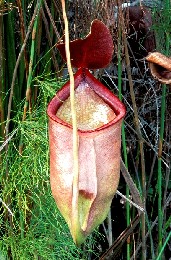
Figure 1: A lower pitcher of Nepenthes rowanae.
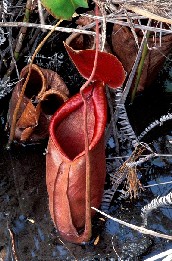
Figure 2: An intermediate pitcher of Nepenthes rowanae.
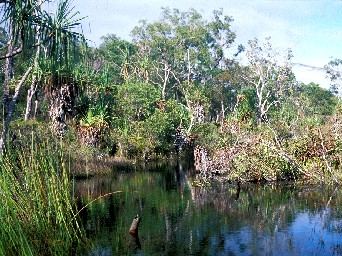
Figure 3: Nepenthes rowanae habitat in Cape York , Queensland . Note the Nepenthes visible at the right side of the photograph.
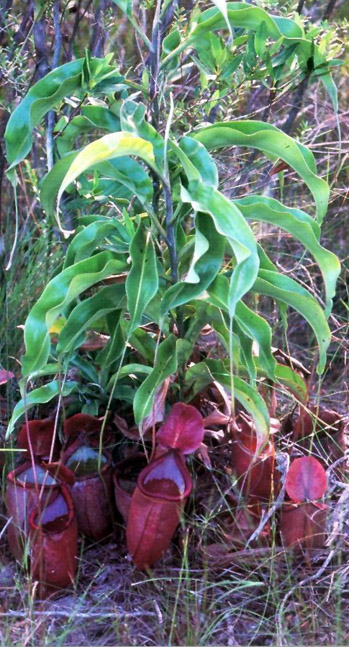
Front Cover: A large plant of Nepenthes rowanae in a swamp on Cape York, with upper, intermediate and lower pitchers. The largest pitchers on this specimen were about 20cm in height (not including the lid).
|
